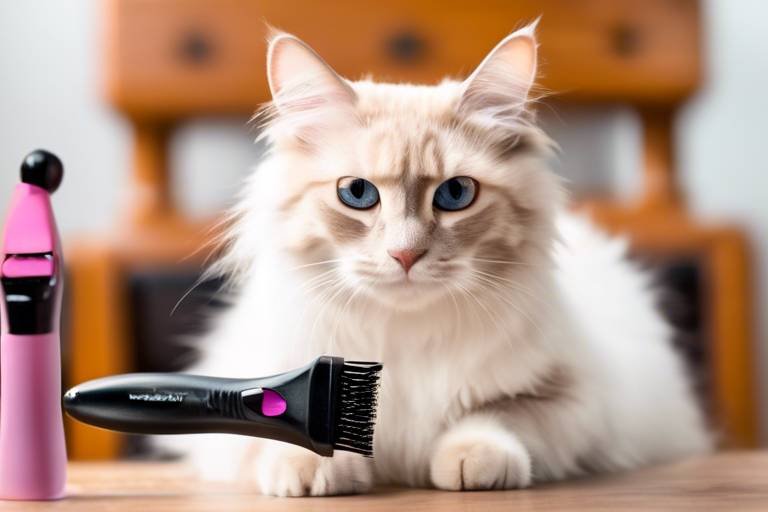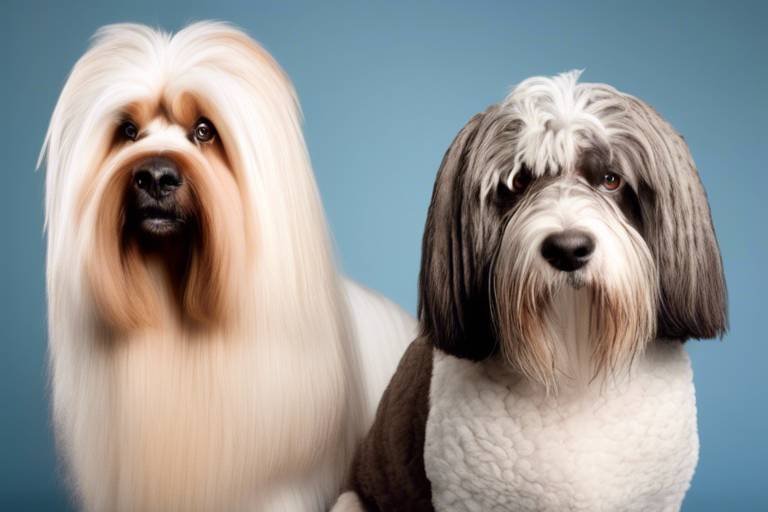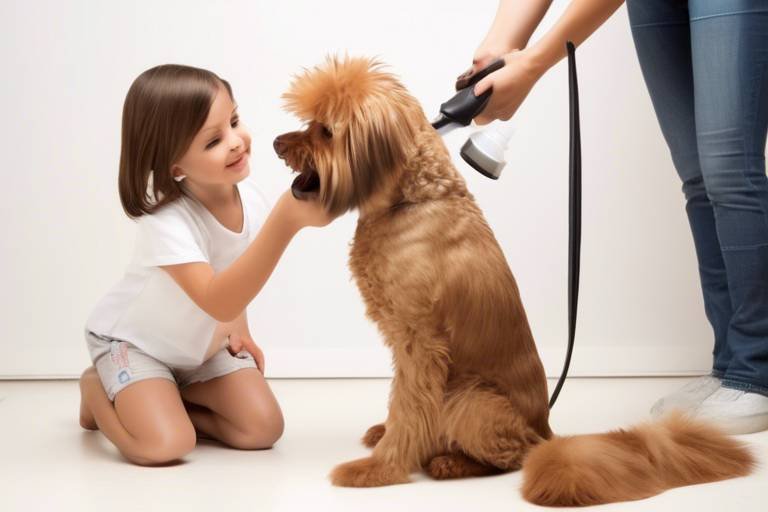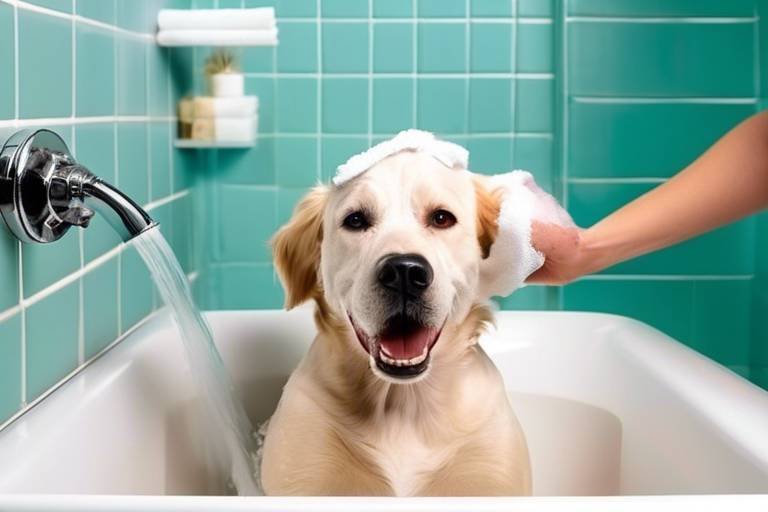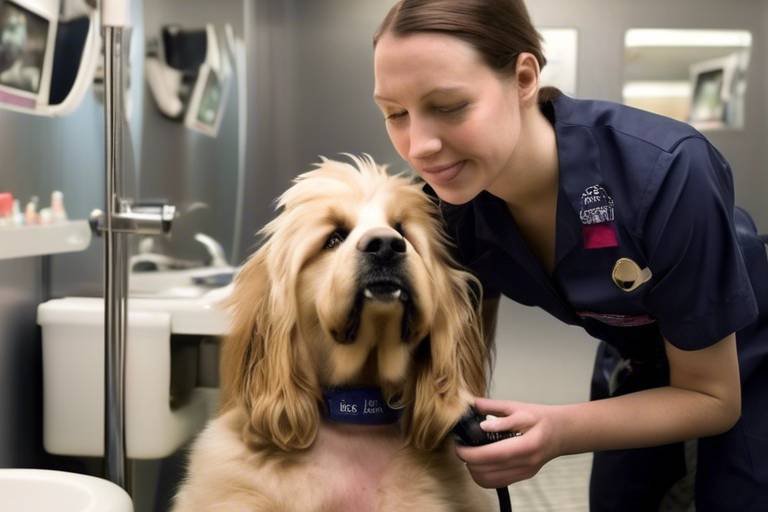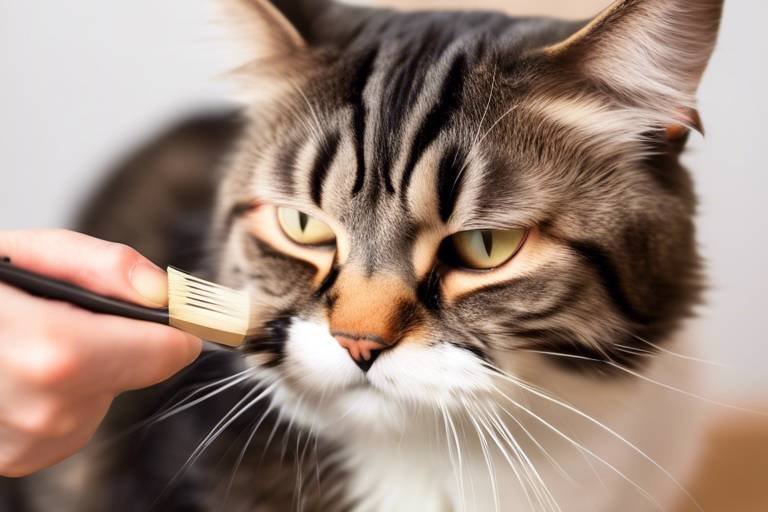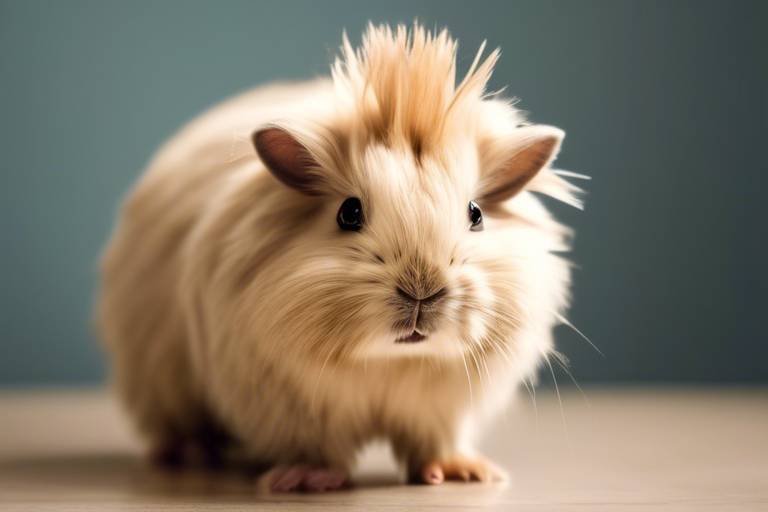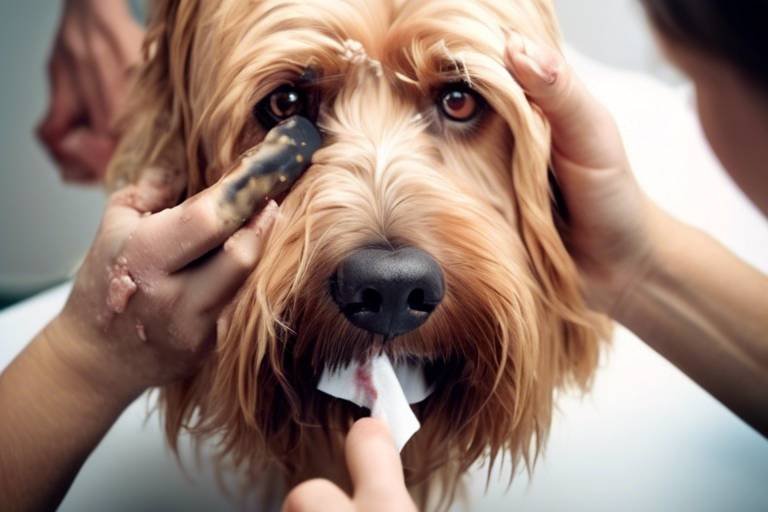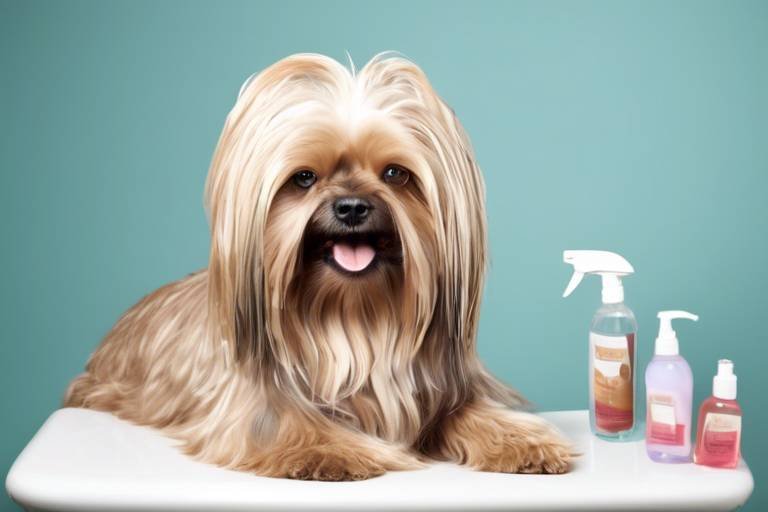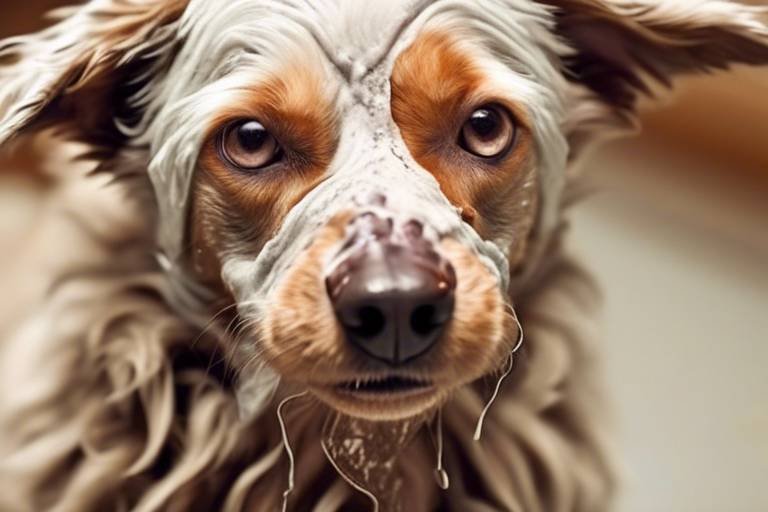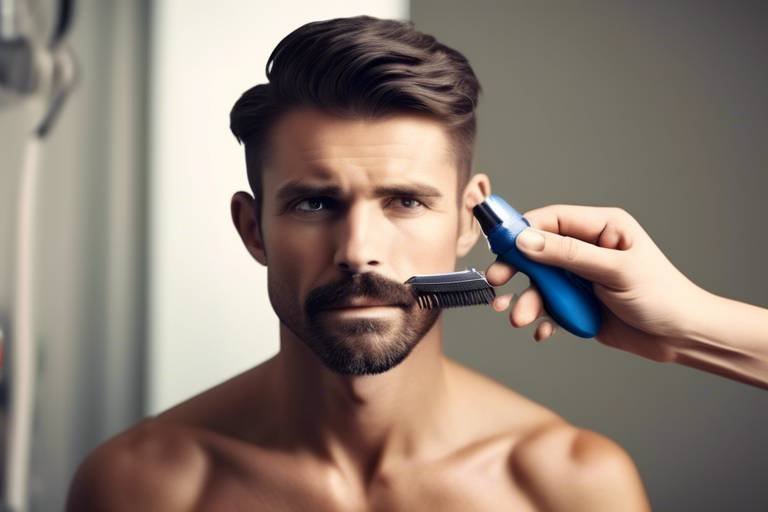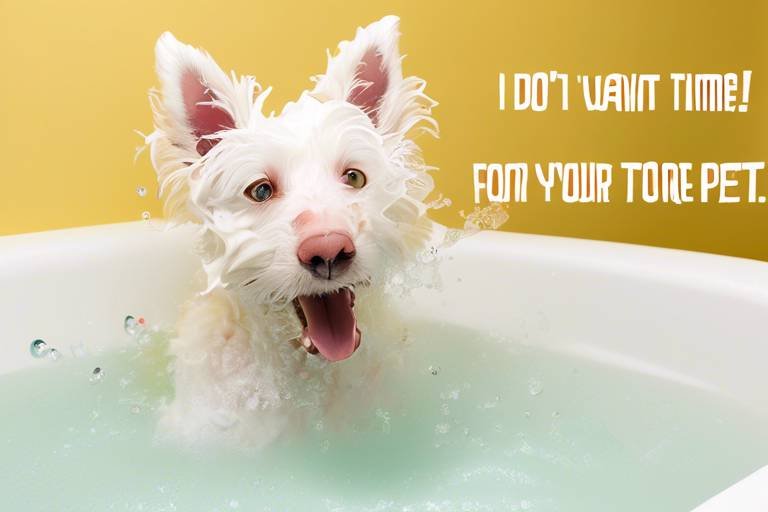How to Choose the Right Grooming Tools for Cats
When it comes to grooming your feline friend, the right tools can make all the difference. Just like humans need the right comb or brush to keep their hair looking fabulous, your cat requires specific grooming tools tailored to their unique needs. Selecting the appropriate grooming tools not only enhances your cat's appearance but also contributes significantly to their overall health and comfort. So, how do you navigate the sea of grooming products available on the market? Well, let's dive into the essentials!
Every cat is a unique individual, and their grooming needs can vary widely based on several factors including breed, coat type, and health. For example, long-haired breeds like Persians require more frequent grooming to prevent matting, while short-haired breeds may need less. Additionally, some cats may have sensitive skin or specific health concerns that necessitate particular types of grooming tools. Understanding these needs is crucial for selecting the right tools that cater to their specific grooming demands. It’s like finding the perfect outfit that fits just right—comfort and style are key!
Now that we’ve established the importance of understanding your cat’s grooming needs, let’s explore the essential tools every cat owner should consider. From brushes to nail clippers, knowing what’s available can help you create a grooming routine that is both effective and enjoyable for your furry companion. Here’s a quick overview of some must-have tools:
| Grooming Tool | Purpose |
|---|---|
| Brush | Removes loose fur and prevents matting |
| Comb | Detangles fur and checks for parasites |
| Nail Clippers | Trims nails to prevent overgrowth |
| Grooming Gloves | Gathers loose fur while petting |
Different brushes serve various purposes, such as detangling or removing loose fur. When selecting a brush, consider your cat’s coat type. For instance, a slicker brush is excellent for long-haired cats, while a bristle brush works wonders for short-haired breeds. It’s like choosing the right tool for a job—using a hammer when you need a screwdriver just won’t cut it!
Understanding the differences between combs and brushes can help you choose the right tool for your cat's grooming routine. Combs are typically used for detangling and can also help you spot any pesky fleas or ticks hiding in your cat's fur. Brushes, on the other hand, are great for removing loose hair and preventing matting. Think of it this way: a comb is like a detective, searching for hidden problems, while a brush is the cleanup crew, tidying up the mess!
Some cats may require specialized tools, such as de-shedding tools or grooming gloves. De-shedding tools are particularly useful during shedding seasons, while grooming gloves can make the grooming process feel more like a bonding session. These unique options can be game-changers for optimal grooming results, especially if your cat is a bit of a diva when it comes to grooming!
Nail clipping is an essential part of grooming that many cat owners dread. However, with the right tools and techniques, it can be a breeze! When selecting nail clippers for your cat, look for ones specifically designed for pets. They should be sharp, comfortable to hold, and allow for precise cuts. Remember, keeping your cat's nails trimmed not only protects your furniture but also prevents painful injuries to your pet.
Proper maintenance of grooming tools ensures their longevity and effectiveness. After all, a dull blade or a dirty brush won’t do you or your cat any favors! Regularly inspect your tools for wear and tear, and replace them as needed. This is especially important for nail clippers, as dull clippers can cause splintering and discomfort for your cat.
Regular cleaning of grooming tools prevents the buildup of dirt and bacteria. To keep your tools in top shape, wash brushes and combs with warm, soapy water and let them air dry. For nail clippers, a simple wipe with rubbing alcohol can help maintain hygiene. Think of it as giving your tools a spa day—they’ll thank you for it!
Storing grooming tools properly is essential to prevent damage and ensure easy access. Consider using a dedicated grooming bag or a drawer in your vanity to keep everything organized. This way, when it’s time for grooming, you won’t be searching high and low for that elusive brush or nail clipper. A little organization goes a long way!
Q1: How often should I groom my cat?
A1: It depends on the breed and coat type. Long-haired cats may need grooming several times a week, while short-haired cats may only need it once a week.
Q2: What if my cat doesn't like being groomed?
A2: Gradually introduce grooming by starting with short sessions and using treats to create a positive association.
Q3: Are there any grooming tools that are better for sensitive skin?
A3: Yes, look for soft-bristled brushes and grooming gloves that are designed for sensitive skin.
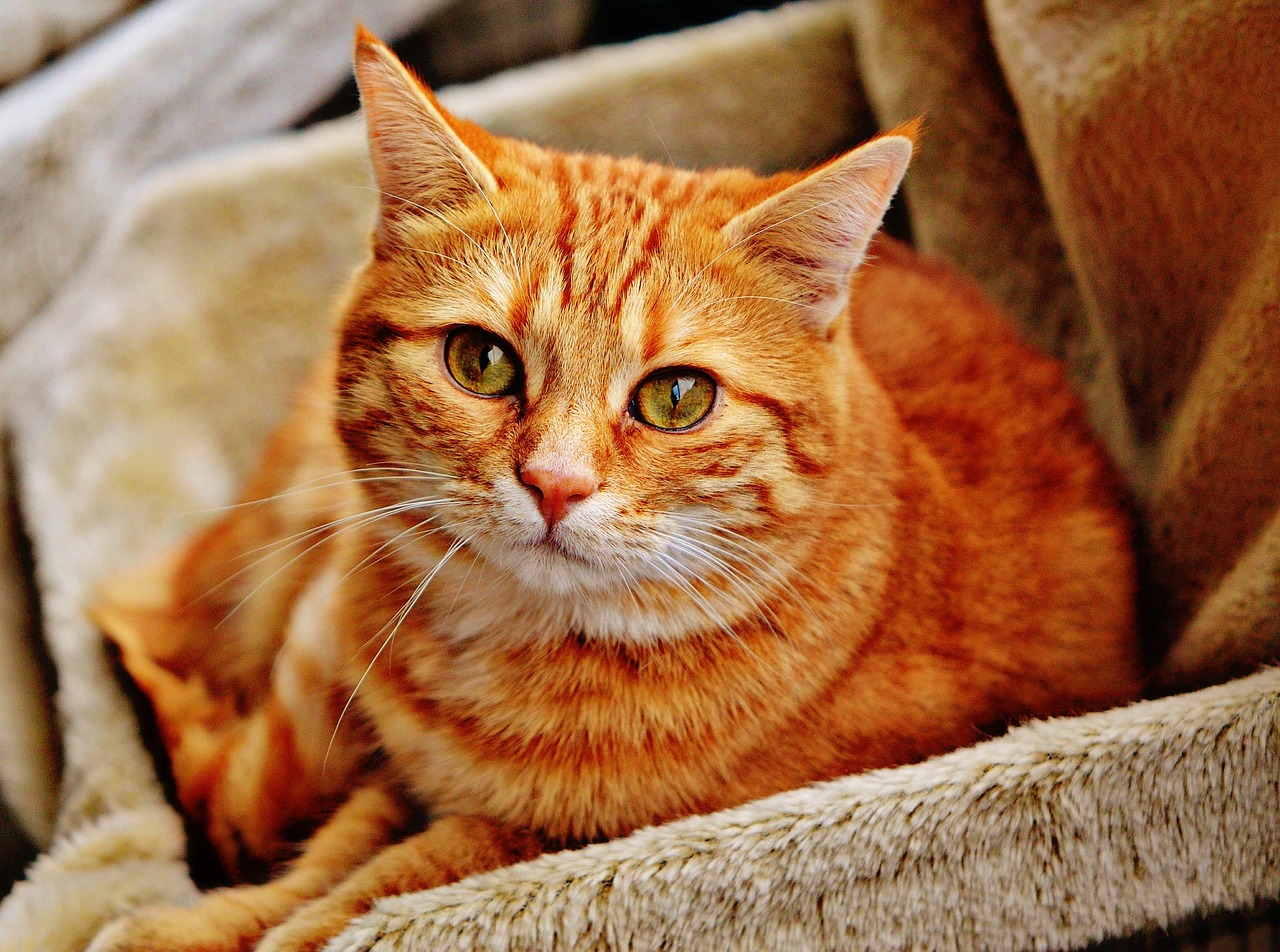
Understanding Your Cat's Grooming Needs
Every cat is a unique little creature, and just like people, they have their own specific grooming needs. Understanding these needs is crucial for selecting the right tools that cater to their individual grooming demands. Factors like breed, coat type, and health play significant roles in determining how often and what type of grooming your feline friend requires. For instance, long-haired breeds like Persians or Maine Coons might need more frequent grooming to prevent mats and tangles, while short-haired breeds like Siamese or American Shorthairs may require less attention.
Moreover, it's essential to consider your cat's age and health. Kittens may not need as much grooming as adult cats, but they can benefit from early exposure to grooming tools to help them get used to the process. On the other hand, senior cats or those with health issues may need extra care, as they might not groom themselves as effectively. Regular grooming can help you spot any potential health issues, such as skin infections or parasites, early on. So, it's not just about keeping your cat looking fabulous; it's about ensuring they stay healthy and comfortable.
When assessing your cat's grooming needs, take note of the following:
- Breed: Research your cat's breed to understand its specific grooming requirements.
- Coat Type: Determine whether your cat has a long, medium, or short coat, as this will dictate the tools you'll need.
- Health Status: Consider any health issues your cat may have that could affect grooming.
By paying attention to these factors, you can create a tailored grooming routine that not only keeps your cat looking their best but also enhances their overall well-being. Remember, grooming is not just a chore; it's a bonding experience that strengthens the relationship between you and your furry companion. So, grab those grooming tools and get ready to pamper your cat!
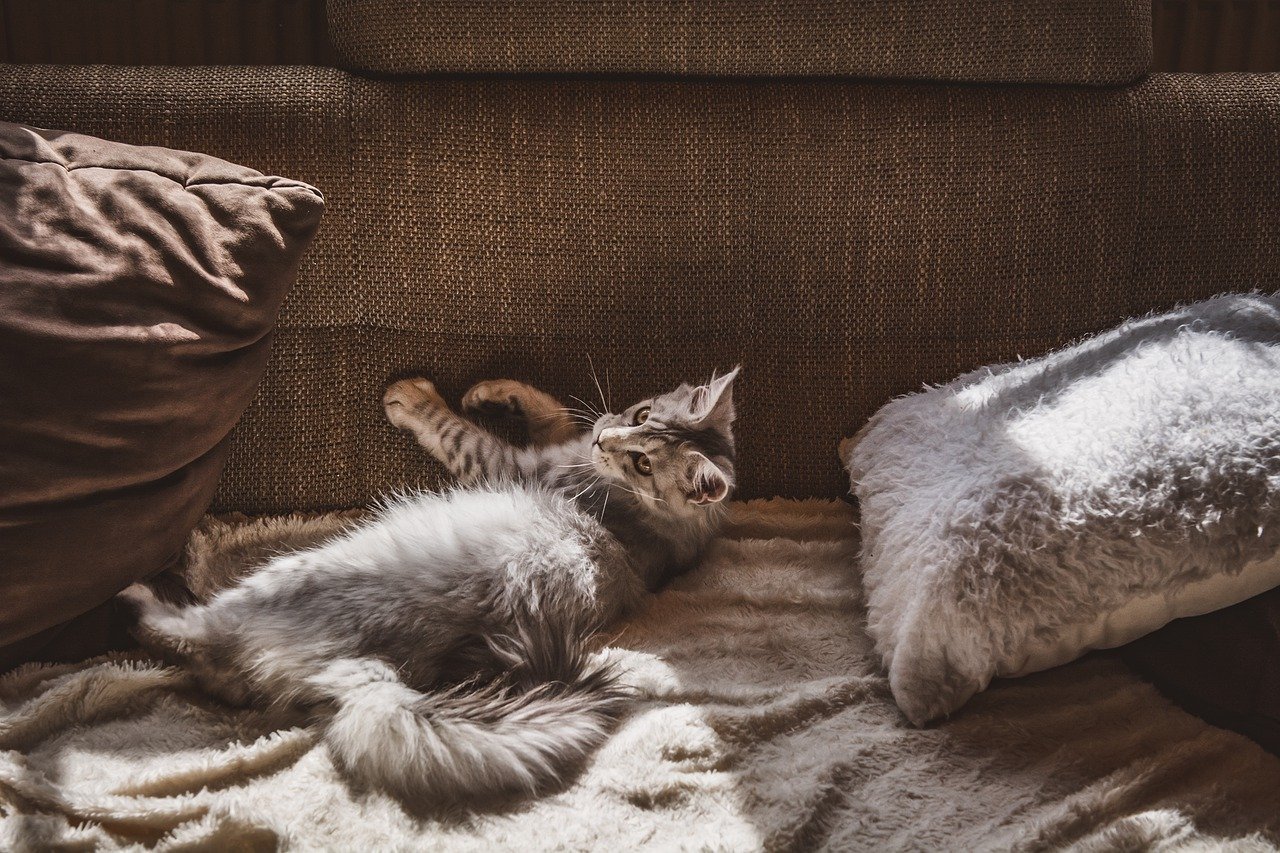
Essential Grooming Tools
When it comes to grooming your beloved feline, having the right tools can make all the difference. Just like a painter needs a variety of brushes to create a masterpiece, cat owners need a selection of grooming tools to keep their furry friends looking and feeling their best. The essentials you should consider include brushes, combs, nail clippers, and specialized tools that cater to your cat's unique needs. Each tool plays a vital role in ensuring your cat's coat remains healthy, free of mats, and that their nails are kept at a manageable length.
First on the list is the humble yet indispensable brush. Brushes come in various types and sizes, tailored to different coat types. For example, long-haired cats often require a slicker brush to detangle their flowing locks, while short-haired breeds might benefit from a bristle brush that helps distribute natural oils and remove loose hair. It's like choosing the right shampoo for your hair type; the right brush can transform your grooming routine from a chore into a bonding experience.
Next up, we have the comb. While brushes are great for surface grooming, combs dive deeper into the coat, helping to remove tangles and debris. Think of it as a fine-tooth comb for your cat—perfect for those pesky knots that just won’t budge. Combs are particularly useful for cats with thick or curly fur, as they can reach the undercoat where brushes may struggle. Understanding the difference between a brush and a comb is crucial for effective grooming, and using them in tandem can yield fantastic results.
Now, let’s talk about nail clippers. Keeping your cat’s claws trimmed is essential not just for your furniture but also for your cat’s health. Overgrown nails can cause discomfort and even lead to injury. When choosing nail clippers, look for ones specifically designed for cats; these often have a safety guard to prevent cutting too close to the quick. There are two main types: guillotine-style and scissor-style clippers. Each has its pros and cons, so it’s worth trying both to see which works best for you and your cat. Remember, it’s not just about cutting nails; it’s about keeping your kitty comfortable and happy.
In addition to these basics, some cats may benefit from specialized grooming tools. For instance, if your cat is a heavy shedder, investing in a de-shedding tool can be a game changer. These tools are designed to reach beneath the top layer of fur, removing loose undercoat without damaging the outer coat. Grooming gloves are another innovative option; they allow you to bond with your cat while effectively removing loose hair and dirt as you pet them. It’s a win-win situation that turns grooming into a pleasurable experience for both you and your feline friend.
To summarize, having the right grooming tools is essential for maintaining your cat’s health and appearance. Whether you opt for a brush, comb, nail clippers, or specialized tools, each has its unique purpose. By understanding your cat's grooming needs and selecting the appropriate tools, you can create a grooming routine that keeps your cat looking fabulous and feeling great.
- How often should I groom my cat? It depends on the breed and coat type. Long-haired cats may need grooming several times a week, while short-haired cats may only need it once a week.
- Can I use human grooming tools on my cat? It's best to use tools specifically designed for cats, as human tools can be too harsh and may not cater to their unique fur and skin needs.
- What should I do if my cat hates grooming? Start slowly, using treats and positive reinforcement to create a more enjoyable experience. Gradually increase the grooming time as your cat becomes more comfortable.
Types of Brushes
When it comes to grooming your feline friend, choosing the right brush is paramount. Just like humans have different hair types that require different care, cats also have unique coat characteristics that dictate the type of brush needed. Understanding the various types of brushes available can make a world of difference in your cat's grooming experience, ensuring not only a clean coat but also a happy kitty.
Let's dive into some common brush types that cat owners should consider:
- Slicker Brushes: These brushes have fine, short wires close together on a flat surface. They are excellent for removing mats and tangles, especially in long-haired breeds. The slicker brush can reach through the top layer of fur to effectively eliminate loose hair and debris.
- Bristle Brushes: Ideal for short-haired cats, bristle brushes help to distribute natural oils in your cat's coat, promoting a healthy shine. They work well for general grooming and can also remove loose fur.
- Rubber Brushes: These are perfect for cats that are sensitive to traditional brushes. Rubber brushes not only remove loose hair but also provide a gentle massage, making grooming a pleasant experience for your cat.
- Undercoat Rakes: If your cat has a thick undercoat, this tool is a must-have. Undercoat rakes have long teeth that penetrate deep into the fur to remove loose hairs and prevent matting.
Now, you might be wondering how to choose the right brush for your cat. The answer lies in understanding your cat's coat type. For instance, long-haired breeds like Persians or Maine Coons will benefit from slicker brushes and undercoat rakes, while short-haired cats like American Shorthairs may only need a bristle brush or rubber brush. It's all about finding the right match to keep your cat’s coat looking its best.
Additionally, consider your cat's temperament during grooming sessions. Some cats may be more sensitive and require a gentler approach, while others may tolerate a firmer brush. Observing your cat's reactions can guide you in selecting the most suitable brush for their grooming routine.
Remember, grooming is not just about maintaining a clean coat; it's also an opportunity for bonding with your cat. So, find a brush that works for both of you, and turn grooming time into a delightful experience!
Comb vs. Brush
When it comes to grooming your feline friend, the choice between a comb and a brush can be as crucial as picking the right flavor of cat food. Each tool serves its own unique purpose and understanding these differences can significantly enhance your cat's grooming experience. So, let’s dive into the nitty-gritty of these two grooming essentials!
A comb is typically used for detangling and removing loose hairs, especially in cats with longer or thicker fur. Think of it as your cat's personal stylist, gently working through knots and tangles without causing discomfort. Combs are particularly effective at reaching the undercoat, which can be a haven for dirt and debris. If your cat has a tendency to mat, a comb is your best friend. It’s like using a fine-toothed comb to perfect your hairstyle; it gets into those tricky areas that a brush might miss.
On the other hand, a brush is designed to remove loose fur and distribute natural oils throughout your cat's coat, promoting a healthy shine. Brushes come in various shapes and sizes, each tailored for different coat types. For example, a slicker brush is fantastic for removing mats and tangles, while a bristle brush works wonders for short-haired cats, giving them that sleek, polished look. Picture brushing your hair with a wide-toothed comb versus a paddle brush; each has its purpose, and the same applies to your cat's grooming tools.
To help you make an informed decision, here’s a quick comparison:
| Feature | Comb | Brush |
|---|---|---|
| Best for | Detangling and undercoat care | Removing loose fur and distributing oils |
| Ideal for | Long-haired or thick-coated cats | Short-haired cats and general grooming |
| Usage Frequency | As needed for tangles | Regularly for maintenance |
Ultimately, the choice between a comb and a brush will depend on your cat’s specific grooming needs. If you’re unsure, consider having both tools on hand. This way, you can tackle any grooming challenge that comes your way, ensuring your kitty looks and feels their best. Remember, grooming is not just about aesthetics; it’s also about maintaining your cat's health and comfort. So, grab that comb or brush, and let the grooming adventures begin!
Specialized Grooming Tools
When it comes to grooming our feline friends, sometimes standard tools just won't cut it. are designed to address specific grooming challenges that certain cats face, particularly those with unique coat types or shedding issues. For example, if you have a long-haired cat, you might find that a regular brush doesn't quite do the trick. That's where de-shedding tools come into play.
These tools are engineered to reach through the topcoat and grab the undercoat, effectively removing loose fur and minimizing shedding. This not only keeps your home cleaner but also helps prevent hairballs, which can be a real nuisance for both you and your kitty. Similarly, grooming gloves are another specialized option that can make the grooming process feel more like a bonding session rather than a chore. These gloves allow you to pet your cat while simultaneously removing loose fur, making it a win-win situation!
Some cats may also require tools that cater to their specific needs. For instance, if your cat has a tendency to mat, a dematting tool can be invaluable. These tools often feature sharp blades that help cut through tangles without pulling on your cat's skin. However, you must use them with caution to avoid causing any discomfort. Always remember, the goal is to make grooming a positive experience for your furry friend.
In addition to the tools mentioned, there are also specialized combs designed for various coat types. For example, a wide-toothed comb is perfect for detangling long hair, while a fine-toothed comb can help remove fleas or debris from short-haired cats. Understanding the specific needs of your cat's coat will guide you in selecting the right specialized tools.
To summarize, investing in specialized grooming tools can significantly enhance your cat's grooming experience. It's not just about keeping them looking good; it's about ensuring their comfort and health. By choosing the right tools, you can turn grooming time into a delightful bonding activity rather than a dreaded chore. So, keep an eye out for these specialized options and make grooming a breeze!
- What are the best specialized grooming tools for long-haired cats? Long-haired cats benefit greatly from de-shedding tools, dematting combs, and wide-toothed combs to manage tangles and minimize shedding.
- Can I use human grooming tools on my cat? While some human tools may work, it's best to use tools specifically designed for cats to avoid injury and ensure effectiveness.
- How often should I groom my cat? The frequency of grooming depends on your cat's coat type. Long-haired cats may need daily grooming, while short-haired cats might only require weekly grooming.
- What should I do if my cat resists grooming? Start slow, using treats and gentle strokes to create a positive association with grooming. Patience is key!
Choosing Nail Clippers
When it comes to grooming your feline friend, nail clipping is an essential task that should not be overlooked. Cats, like humans, need regular nail care to prevent discomfort and health issues. But how do you choose the right nail clippers for your cat? There are several factors to consider, including the type of clippers, your cat's temperament, and their specific needs.
First, let's talk about the types of nail clippers available. There are primarily two types that cat owners typically use: guillotine clippers and scissor-style clippers. Guillotine clippers feature a small hole where you insert the nail, and as you squeeze the handles, a blade cuts through the nail. These are great for precision and are often favored for their ease of use. On the other hand, scissor-style clippers resemble a pair of scissors and are suitable for thicker nails. They can provide a clean cut but may require a bit more practice to master.
Next, consider your cat's personality. If your cat is particularly skittish or sensitive, you might want to opt for clippers that are quieter or have a more ergonomic design. Some clippers even come with a safety guard to prevent cutting too much nail and causing injury. It’s essential to choose a pair that feels comfortable in your hand, as this will help you maintain control and confidence while grooming.
Another important aspect is the size of the clippers. If you have a small cat, you might not need heavy-duty clippers designed for larger breeds. Conversely, if your cat has larger, thicker nails, a more robust clipper will be necessary. Always make sure the clippers are sharp; dull blades can crush the nail rather than cut it, leading to pain and discomfort for your furry friend.
Here’s a quick summary of what to look for when choosing nail clippers:
- Type: Guillotine or scissor-style?
- Safety Features: Does it have a safety guard?
- Size: Is it appropriate for your cat's size?
- Comfort: Does it feel good in your hand?
- Sharpness: Are the blades sharp enough for a clean cut?
Once you've chosen the right clippers, the next step is to ensure a stress-free experience for both you and your cat. Start by familiarizing your cat with the clippers before the actual grooming session. Let them sniff the clippers and reward them with treats to create a positive association. When you’re ready to clip, hold your cat securely but gently, and try to keep the atmosphere calm and relaxed. If your cat becomes anxious, take a break and try again later.
In summary, choosing the right nail clippers is crucial for maintaining your cat's health and comfort. By considering the type, size, and safety features of the clippers, along with your cat's personality, you can make an informed decision that will make nail trimming a breeze. Remember, the goal is to keep your feline friend happy and well-groomed!
Q: How often should I trim my cat's nails?
A: Generally, cats need their nails trimmed every 2-4 weeks, depending on their activity level and whether they are indoor or outdoor cats.
Q: What if my cat resists nail trimming?
A: If your cat is resistant, try to introduce the clippers gradually and reward them with treats. You can also consider getting a professional groomer involved.
Q: Can I use human nail clippers on my cat?
A: While it’s possible to use human clippers, it’s not recommended. Cat nail clippers are specifically designed for their nail structure and can provide a cleaner cut.
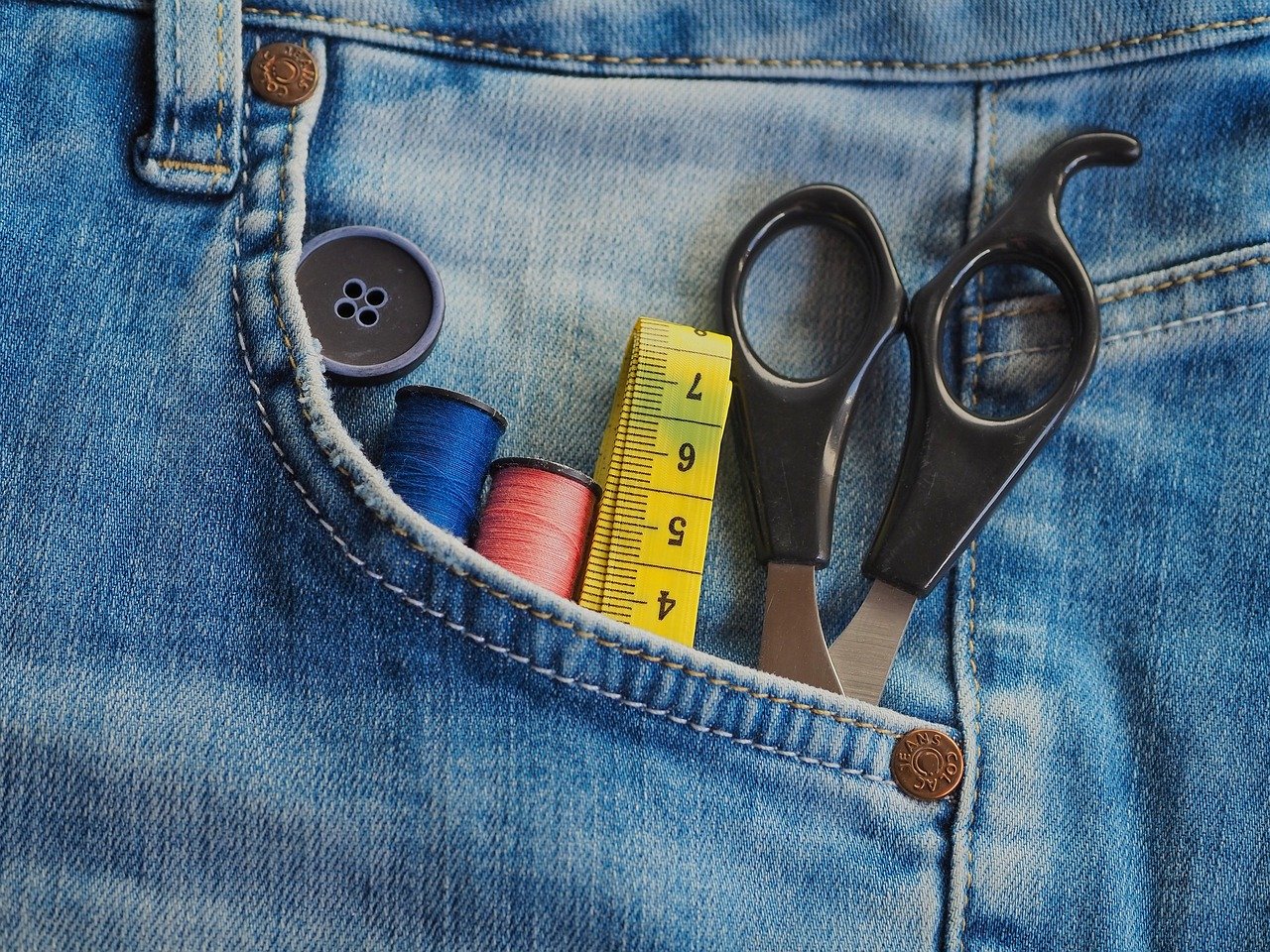
Maintaining Your Grooming Tools
Taking care of your grooming tools is just as important as using them. Think of your grooming tools as the trusty sidekicks in your cat's grooming journey; they need to be in top shape to help you keep your feline friend looking and feeling their best. Proper maintenance not only extends the life of these tools but also ensures they function effectively every time you reach for them. So, how do you keep your grooming arsenal in peak condition? Let’s dive into some essential practices!
First off, regular cleaning is crucial. After each grooming session, take a moment to remove any hair or debris from your tools. For brushes and combs, you can use a simple comb or your fingers to pull out the tangled fur. This prevents buildup, which can lead to bacteria growth. For a deeper clean, wash your brushes in warm, soapy water once a month. Rinse them thoroughly and let them air dry. Remember, a clean brush is a happy brush!
When it comes to nail clippers, they require special attention. Ensure that the blades are sharp and free from rust. A dull clipper can cause discomfort to your cat and make the task more challenging. Wipe the blades with a disinfectant after each use to minimize the risk of infection. If you notice any rust or wear, it might be time to invest in a new pair. After all, your cat deserves the best!
Storage is another vital aspect of maintaining your grooming tools. Having a designated space for your grooming kit not only keeps your tools organized but also protects them from damage. Consider using a sturdy container or a grooming caddy to store your brushes, combs, and clippers. Make sure to keep them in a dry area, away from excessive moisture, which can lead to rust and mold. You can even label compartments to make it easier to find what you need when it’s time for grooming.
Here’s a quick overview of some best practices for maintaining your grooming tools:
- Clean after each use: Remove hair and debris immediately.
- Wash monthly: Use warm, soapy water for a deeper clean.
- Inspect regularly: Check for wear and tear, especially on nail clippers.
- Store properly: Use a container to keep tools organized and dry.
By incorporating these maintenance tips into your routine, you’ll not only enhance the lifespan of your grooming tools but also ensure a comfortable grooming experience for your cat. Remember, a well-maintained tool is like a well-tuned engine – it runs smoother and performs better!
Q1: How often should I clean my grooming tools?
A1: It's best to clean your grooming tools after every use to prevent hair buildup and bacteria growth. A deeper clean with soapy water can be done monthly.
Q2: What should I do if my nail clippers are rusty?
A2: If you notice rust on your nail clippers, it’s advisable to replace them. Rust can be harmful and may cause infections.
Q3: Can I use the same tools for different pets?
A3: While you can use the same tools, it's recommended to clean them thoroughly between uses to prevent cross-contamination.
Q4: How can I tell if my brushes are worn out?
A4: If the bristles are frayed or bent, or if they no longer effectively remove loose fur, it's time to replace them.
Cleaning Techniques
Keeping your grooming tools clean is not just about aesthetics; it's essential for the health and well-being of your beloved feline companion. Over time, grooming tools can accumulate dirt, fur, and bacteria, which can lead to skin irritations and infections for your cat. To prevent this, you should establish a regular cleaning routine. Start by brushing off any loose fur from your brushes and combs after each use. This simple step can significantly reduce the buildup of hair and grime.
For deeper cleaning, consider soaking your grooming tools in warm, soapy water. Use a mild dish soap to avoid any harsh chemicals that could harm your cat. After soaking for about 10-15 minutes, use an old toothbrush or a soft cloth to scrub away any remaining debris. Pay special attention to the bristles of brushes and the teeth of combs, as these areas are notorious for collecting dirt. Rinse thoroughly under warm water to ensure no soap residue remains.
Once cleaned, it's crucial to dry your tools completely before storing them. Moisture can promote the growth of bacteria, which is the last thing you want for your grooming supplies. A simple way to dry them is by laying them on a clean towel or using a hairdryer on a low setting. Additionally, you can disinfect your tools periodically with a solution of equal parts water and vinegar. This natural disinfectant is effective and safe for your cat.
Here's a quick overview of the cleaning techniques:
| Tool | Cleaning Method | Frequency |
|---|---|---|
| Brushes | Soak in soapy water, scrub, rinse | After each use |
| Combs | Soak, scrub with a toothbrush, rinse | After each use |
| Nail Clippers | Wipe with alcohol or disinfectant | After each use |
By following these cleaning techniques, you not only extend the life of your grooming tools but also ensure that each grooming session is a pleasant experience for your cat. Remember, a clean tool is a happy tool, and a happy grooming session leads to a happier cat!
- How often should I clean my cat's grooming tools? It's best to clean them after each use to prevent dirt and bacteria buildup.
- Can I use regular household cleaners on grooming tools? No, stick to mild soaps or natural disinfectants like vinegar to avoid harming your cat.
- What should I do if my cat doesn't like being groomed? Start slowly, using treats and positive reinforcement to create a more enjoyable experience.
Storage Tips
Storing your cat grooming tools properly is just as important as using them correctly. Think of it like organizing your toolbox; if everything is scattered around, you’ll waste time looking for the right tool when you need it the most. To keep your grooming tools in prime condition and easily accessible, consider the following tips:
First and foremost, invest in a dedicated storage container. This could be a simple plastic bin or a stylish basket that fits your home decor. The key is to ensure that it’s large enough to hold all your tools without cramming them in. You wouldn’t want to damage your brushes or clippers by squeezing them into a tight space, right?
Next, think about the layout of your storage. Place frequently used items, like brushes and combs, at the top or in an easily accessible section. Meanwhile, less frequently used tools, such as de-shedding tools or specialized clippers, can go deeper in the container. This way, you can grab what you need without digging through everything.
Another practical tip is to clean your tools before storing them. Dirt and fur can accumulate, which might lead to bacteria growth. A quick wipe down with a damp cloth or a thorough cleaning after each use will go a long way in maintaining hygiene and prolonging the life of your tools. Plus, it’s always nice to start with a clean slate!
For those who have limited space, consider using vertical storage solutions like wall-mounted racks or pegboards. This not only saves space but also allows you to display your grooming tools in an organized manner. You can hang brushes, combs, and even clippers, making them easy to grab when it’s time for grooming. Just make sure they are out of reach of curious paws!
Lastly, label your storage containers if you have multiple ones. This is especially helpful if you have a variety of grooming tools for different pets. A simple label can save you from confusion and make your grooming routine smoother. After all, who wants to be hunting for a specific tool when Fluffy is ready for her pampering session?
By following these storage tips, you’ll not only keep your grooming tools in excellent condition but also create a more efficient grooming experience for both you and your feline friend. Happy grooming!
Q1: How often should I groom my cat?
A1: The frequency of grooming depends on your cat's coat type. Long-haired cats may require grooming several times a week, while short-haired cats can be groomed less frequently, possibly once a week.
Q2: What should I do if my cat doesn't like grooming?
A2: Start slowly and make grooming a positive experience. Use treats and gentle strokes to help your cat associate grooming with something enjoyable. Patience is key!
Q3: How can I tell if my grooming tools are worn out?
A3: If your brushes are losing bristles, or your clippers are not cutting smoothly, it may be time to replace them. Regular inspection can help you identify when tools need to be retired.
Frequently Asked Questions
- What grooming tools do I need for my cat?
Every cat owner should have a few essential grooming tools, including a good brush, a comb, and nail clippers. Depending on your cat's coat type, you might also need specialized tools like de-shedding brushes or grooming gloves. These tools help maintain your cat's coat and keep them comfortable.
- How often should I groom my cat?
The frequency of grooming depends on your cat's breed and coat type. Long-haired cats typically require daily grooming to prevent mats and tangles, while short-haired cats may only need grooming once a week. Regular grooming not only keeps your cat looking good but also helps reduce shedding and hairballs!
- Can I use human grooming tools on my cat?
It's best to avoid using human grooming tools on your cat. Cat grooming tools are designed specifically for their unique fur types and skin sensitivities. Using the wrong tools can lead to discomfort or even injury. Stick with tools made for cats to ensure a safe and effective grooming experience.
- How do I choose the right brush for my cat?
Choosing the right brush depends on your cat's coat type. For example, a slicker brush works well for long-haired cats to remove tangles, while a bristle brush is great for short-haired breeds. If you're unsure, consult your vet or a professional groomer for recommendations tailored to your furry friend.
- What if my cat hates being groomed?
If your cat is resistant to grooming, don't worry! Start slowly by introducing the tools gradually and rewarding them with treats and praise. Make grooming a positive experience, and be patient. Over time, your cat may become more comfortable with the process.
- How can I keep my grooming tools clean?
Regular cleaning of your grooming tools is essential for maintaining hygiene. After each use, wipe down brushes and combs with a damp cloth to remove fur and debris. For deeper cleaning, soak them in warm, soapy water and rinse thoroughly. This helps prevent the buildup of dirt and bacteria!
- What should I do if I accidentally cut my cat's nail too short?
If you accidentally cut your cat's nail too short and it starts to bleed, don't panic! Apply a styptic powder or cornstarch to the tip of the nail to help stop the bleeding. Keep your cat calm, and if the bleeding doesn't stop after a few minutes, contact your veterinarian for further assistance.
- How can I store my grooming tools properly?
To keep your grooming tools in good condition, store them in a clean, dry place away from direct sunlight. A dedicated grooming kit or a small container can help keep everything organized and easily accessible. Just make sure to keep them out of reach of your curious kitty!

